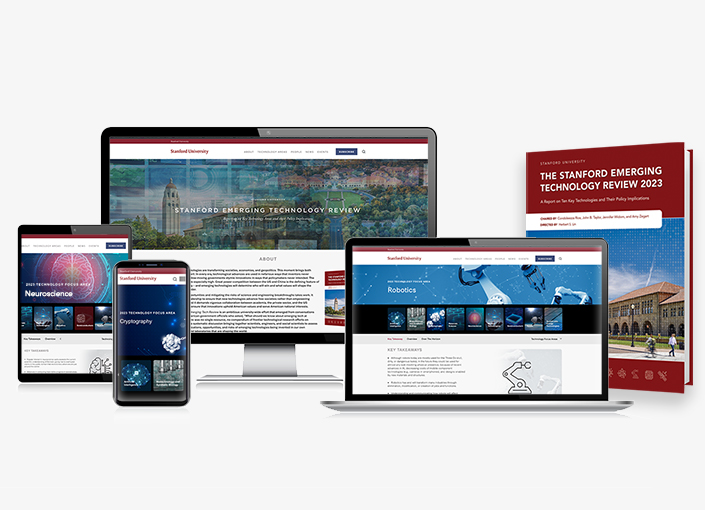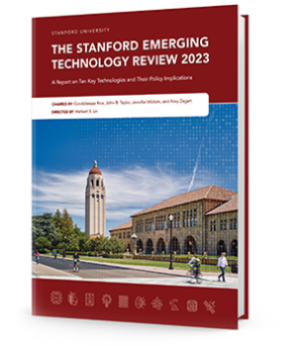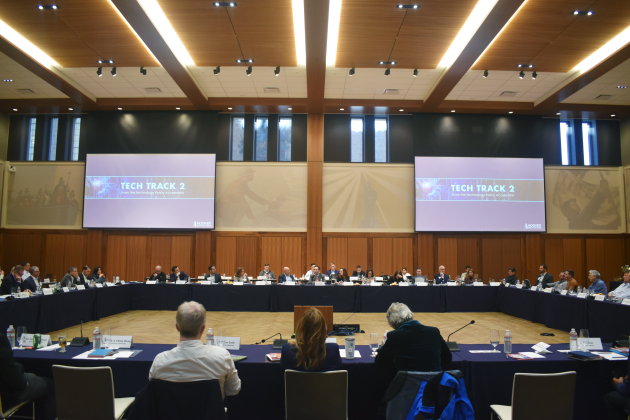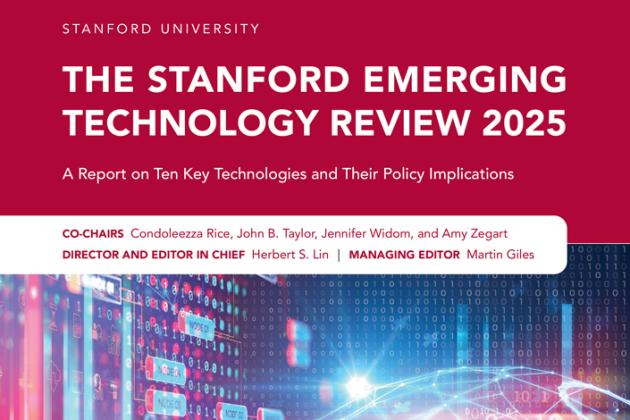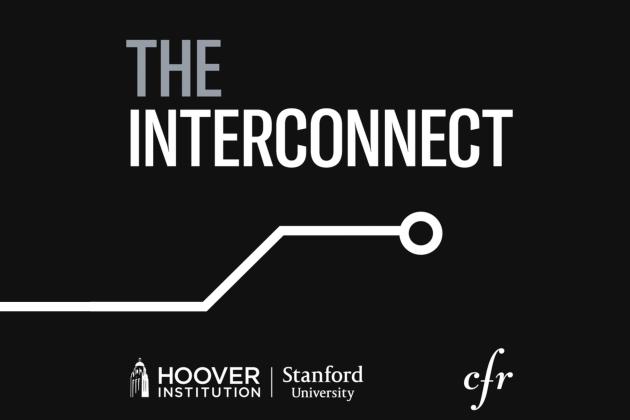Hoover Institution (Stanford, CA) – The Hoover Institution and Stanford School of Engineering have launched the inaugural edition of the Stanford Emerging Technology Review, a project and publication dedicated to the forefront of technologies shaping the global landscape.
Established by cochairs Condoleezza Rice, director of the Hoover Institution; Jennifer Widom, dean of the School of Engineering; and Hoover senior fellows John Taylor and Amy Zegart, this ambitious university-wide initiative assembles Stanford's eminent scientists and engineers to delve into breakthroughs within these technologies and analyze their policy implications for US government decision makers, industry leaders, and the attentive public.
"Situated within a world-class liberal arts university and colocated with professional schools and a leading policy research center like the Hoover Institution, Stanford Engineering is uniquely positioned to advance an initiative like the Stanford Emerging Technology Review,” Dean Widom said. “Our school’s legacy of innovation and cross-disciplinary collaboration, spanning from the birth of Silicon Valley to groundbreaking advancements in human health, sets us apart and paves the way for the tremendous impact of this project."
“The inaugural release of the Stanford Emerging Technology Review is an important new resource for those trying to keep pace with a rapidly evolving technological landscape,” Director Rice said. “The report combines the policy expertise at Hoover with Stanford scientists who are doing cutting-edge research in the heart of Silicon Valley, and it will serve as a translation of sorts between the two to make the latest breakthroughs continuously accessible to policymakers.”
Directed and edited by Herbert Lin, Hank J. Holland Fellow in Cyber Policy and Security, the Review underscores the heightened significance of today's technological advancements. In every era, technology possesses the transformative power to modernize and fortify nations, contributing to saving lives, winning wars, fostering prosperity, and advancing the human condition.
Yet, historical instances abound where technology fell into the wrong hands, deployed in ways unintended by its creators—to degrade human talent, stifle societies, and exacerbate challenges rather than solve them.
The first edition of the Stanford Emerging Technology Review serves as an indispensable primer for 10 pivotal emerging technology domains: (1) artificial intelligence, (2) biotechnology and synthetic biology, (3) cryptography, (4) sustainable energy technologies, (5) materials science/nanotechnology, (6) neuroscience, (7) nuclear technologies, (8) robotics, (9) semiconductors, and (10) space technologies.
The Review is guided by four critical observations:
- Policymakers need better resources to help them understand technological developments more quickly, continuously, and easily.
- America's global innovation leadership is paramount, not only for its economy and national security but also as the linchpin for sustaining a dynamic global technology innovation ecosystem and securing its benefits.
- Academia's role in American innovation is indispensable as it engages in fundamental research with longer time horizons, although it is increasingly at risk of being overshadowed by private industry focusing on near-term commercialization.
- Situated in Silicon Valley, Stanford boasts a unique vantage point for technological innovation, with numerous faculty, researchers, and students founding major tech companies and start-ups. Stanford also has a rich history of engaging with government leaders and creating institutional initiatives that unite policymakers and researchers to address the world's most formidable policy challenges.
Importantly, the Review represents diverse perspectives from Stanford rather than a single viewpoint. Individual faculty members involved in the publication may not necessarily agree with all contents. Instead, the report aims to reflect the collective expertise of the university regarding the state of the 10 fields, guided by their respective experts.
Moreover, the Review refrains from offering policy recommendations. Its objective is to serve as a reference resource, updated annually and with a variety of learning sessions and events throughout the year, informing successive generations of policymakers about technological fields and their implications.
In the months ahead, contributors to the Stanford Emerging Technology Review will produce in-depth reports on the 10 technology areas, conduct briefings in California and Washington, DC, and introduce multimedia educational products. These ambitious goals are intended to help government and private sector leaders, as well as the attentive public, understand tech issues in a real-time, continuous, and user-friendly way.
Click here to download the report and learn more.
For coverage opportunities, contact Jeffrey Marschner, 202-760-3187, jmarsch@stanford.edu.

